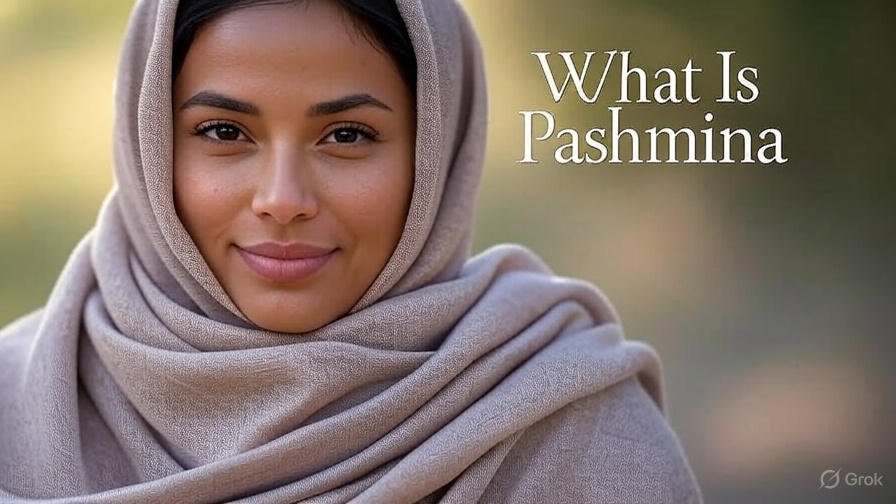
The Ancient Origins of Pashmina in Kashmir
Pashmina’s story starts in the 3rd century. It originated in Kashmir. The region is known for its beauty and artisans. The fiber comes from the Changthangi goat. This goat lives above 12,000 feet. Nomadic herders first collected it. The term “pashmina” means “soft gold” in Persian. This shows its early value. It was traded along the Silk Road.
Historical texts, like *Rajatarangini* from the 12th century, mention it. Pashmina was used in royal garments by 300 CE. Mughal emperors like Akbar popularized it. They gifted shawls in the 15th century. European explorers brought it west in the 17th century. It adorned queens and aristocrats. For more on Silk Road exchanges, see UNESCO’s Silk Road project.
Expert Insight: “Pashmina’s rise from a pastoral resource to a royal treasure shows Kashmir’s cultural role.” — Aisha Khan, Textile Historian
Evolution Across Centuries
Pashmina evolved with global trade. In the 18th century, British traders brought it to Europe. It sparked a craze among the elite. Queen Victoria loved it in the 19th century. This led to workshops in Paisley, Scotland. Imitations were mass-produced there. The “Paisley pattern” emerged.
The 20th century brought challenges. Synthetic fabrics and looms threatened tradition. The Indian government acted in 2008. It granted GI status to “Kashmir Pashmina.” This protected its authenticity. In 2025, designers blend heritage with modern styles. This keeps it relevant in sustainable fashion.
Exports hit $50 million yearly. This is per the Kashmir Chamber of Commerce, 2024. Yet, climate affects goat populations. This tests its resilience.
The Artistry of Traditional Weaving
Pashmina’s essence lies in its craft. The process is handed down for generations. Collecting pashm starts in spring. It requires gentle combing. This avoids damaging the fibers. Women spin it on a charkha. The yarn is finer than 15 microns.
Weaving is an art. Artisans use handlooms. They achieve 600 threads per inch. This takes 100–200 hours per shawl. Natural dyes come from indigo and madder. Pomegranate skins add eco-friendly hues. “Sozni” embroidery adds intricacy. Silk threads form paisley motifs. This reflects Kashmir’s flora.
Power looms exist now. But handwoven pashmina has a better texture. The Craft Development Institute in Srinagar trains weavers. This preserves the craft. For more on traditional crafts, see National Geographic’s section.
Technical Detail: A pashmina shawl can pass through a ring. This tests its quality.
The Enduring Value in 2025
Pashmina’s value comes from rarity. Only 1–2 grams of fiber come per goat yearly. This drives prices from $100 to $1,500. The GI tag ensures authenticity. It protects against imitations.
Eco-conscious fashion boosts its appeal. Pashmina is biodegradable. It uses no harmful chemicals. Designers like Rahul Mishra showcase it. They blend it with modern cuts. It suits scarves, stoles, and coats. This makes it versatile.
Market trends show 15% growth. This is per Textile World, 2025. Pashmina leads due to its heritage.
Preservation Efforts and Challenges
Climate change threatens pashmina. Rising temperatures affect goat habitats. The Jammu and Kashmir government responds. UNESCO helps with breeding programs. Eco-friendly grazing policies are in place. Artisans face economic pressure. Cheaper alternatives compete. Fair trade certifications ensure wages.
Consumer education is key. Authentic pashmina feels warm and light. It has a natural sheen. The Handicrafts and Handlooms Exports Corporation helps. It promotes awareness through exhibitions.
Conclusion
Exploring what is pashmina reveals a legacy. It spans ancient Kashmir to 2025 luxury. The textile embodies handweaving artistry. It shows the makers’ resilience. Sustainable fashion values it. Pashmina is a heritage symbol. Support authentic artisans. Keep this craft alive.
You may also read: I See Ghosts Hoodie: A Collector’s Guide to Rarity and Value in 2025
